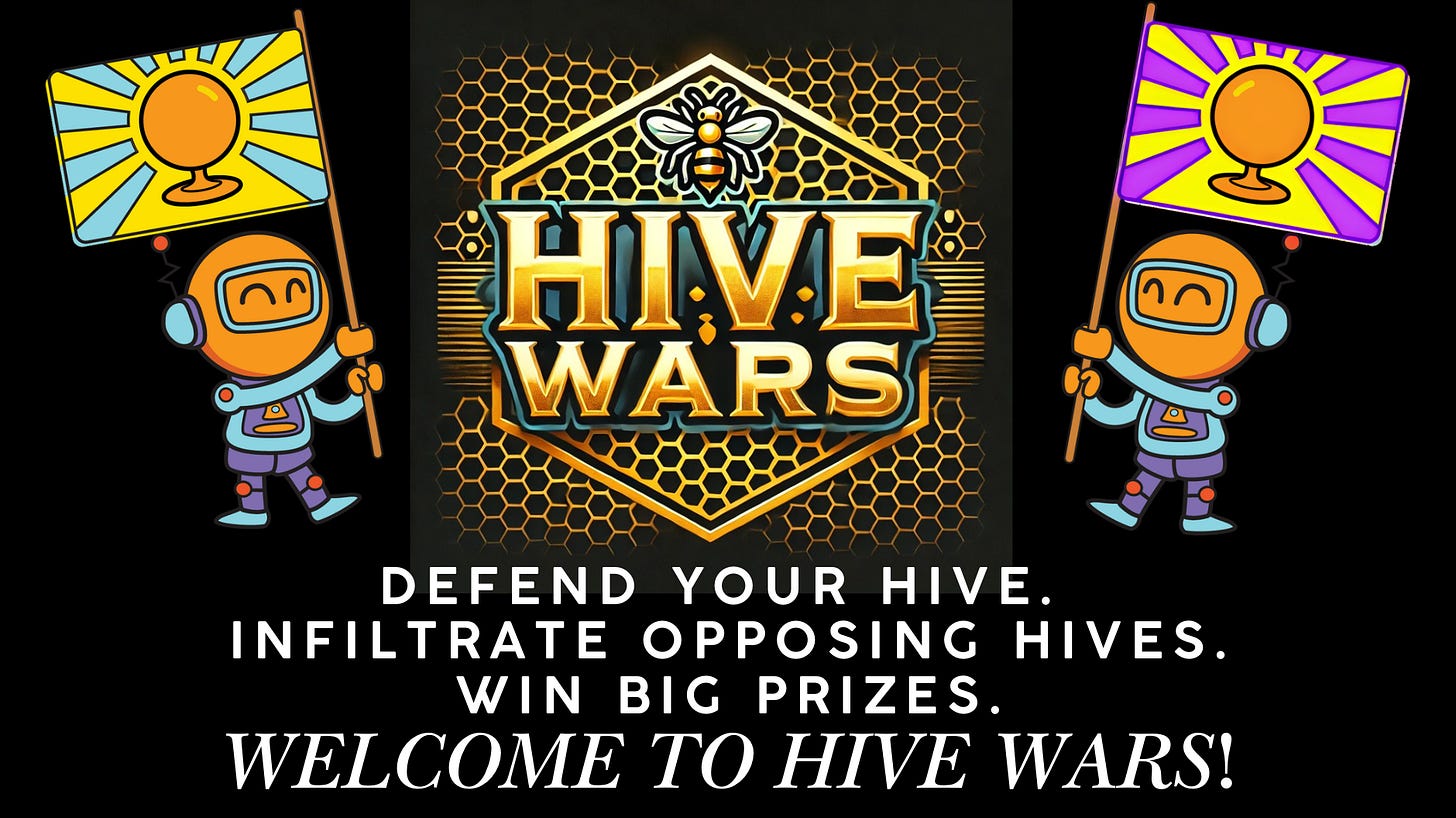Creativity in Constraints
Building Hive Wars for SporcleCon
Some of the best ideas are born when you have to navigate around constraints. That was certainly the case with Hive Wars, a marquee-level game we’re debuting at the upcoming SporcleCon. The idea was ambitious, but important to me: create a game that’s inclusive of all skill levels, promotes connection among attendees, and could potentially sit near the top of the SporcleCon bill. But like any ambitious idea, there were challenges.
To build a big game like this properly in our digital system, we’d need heavy involvement from our design, product, and engineering teams. That kind of investment is feasible, but it comes with a cost. Was it worth weeks of their time for something untested and slated to be used only one day a year? We had to think creatively—how could we test the idea and bring it to life without draining resources?
Embracing Constraints to Fuel Creativity
We were excited about Hive Wars and didn’t want the idea to disappear because of logistical hurdles. So, we got scrappy. We realized we could jerryrig our existing digital bingo software to suit our needs for the gameplay portion. But adapting it wasn’t as straightforward as it sounded—we needed to create a system for it to score the game the way we wanted.
Enter Google Docs. I’ve worked with Google Docs enough to write basic formulas, but what we needed for this game was beyond my skillset. I turned to ChatGPT for help, explaining what I needed to do. Through trial and error (and a lot of experimentation), I landed on the perfect formula. It was the good ol’…
=IF(D2=$D$9, IF(H2=1, 1, 0), IF(H2<IFERROR(VLOOKUP($D$9, $D$2:$H$6, COLUMN(H2)-COLUMN(D2)+1, FALSE), 9999), 2, 0))It was complex (at least for me) and honestly a little hilarious, but it worked. With that formula in place, we had a foundational tool to bring Hive Wars to life.
Designing Without a Design Team
Once the mechanics were sorted, we still needed a way to display the game as intended. Again, we faced constraints—our design team was already juggling other high-priority projects. So, we turned to Canva.
It’s incredible what Canva can do with pre-existing templates and tools. We created a professional-looking scoreboard that could be updated in real-time and designed it to look like it some design thought involved. It was functional, visually appealing enough, and ready to use.
Finding Allies to Bring Ideas to Life
The final ingredient I needed was an ally. Creative ideas often benefit from collaboration, and I knew I needed someone to help refine and enhance the game. I brought in my coworker and good friend, Nick. He immediately bought into the concept, offered feedback, and helped make Hive Wars even better.
Together, we tested the game during our annual Zoom holiday gathering with Sporcle’s HQ staff. It was a hit. We surveyed participants afterward, and the reviews were overwhelmingly positive.
The Takeaway
By refusing to let constraints stifle our creativity, we turned a concept into reality. We didn’t have all the resources we’d ideally use, but we leaned into what we did have: resourcefulness, collaboration, and a commitment to the idea.
Now, we can’t wait for the world to see Hive Wars at SporcleCon. It’s a testament to what can happen when you let constraints fuel your creativity instead of stopping it in its tracks. Sometimes, all it takes is a good Excel formula, a Canva hack, and a great ally to turn a wild idea into something extraordinary.



